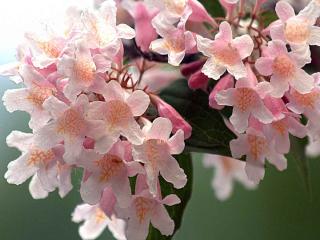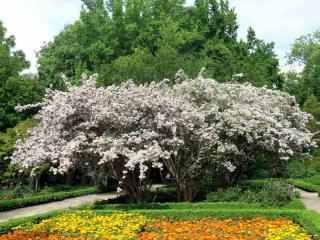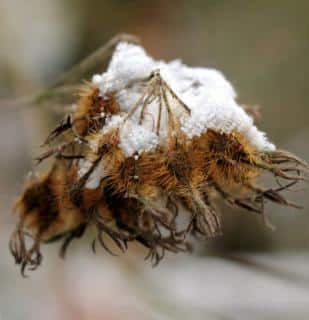

Plant a kolkwitzia in your garden and enjoy this generous shrub’s stunning pink blooms.
Key kolkwitzia facts:
Latin name: Kolkwitzia amabilis
Common name: Kolkwitzia
Family: Caprifoliaceae
Type: shrub
Foliage: deciduous
Shape: arching
Height and width: up to 10 feet (3 meters)
Exposure: sun to partial shade
Soil: all types
Hardiness: hardy
Bloom time: late spring, early summer
A shrub with a bushy shape and arching branches, kolkwitzia turns heads with its lavish blooms. It boasts a plethora of flowers shaped like flared bells, with a pink-white hue and a hint of orange at their center. If deeper pink is more your style, you’ll love the ‘Pink Cloud’ variety.
→ A fun fact: the dark green leaves are oval and fade away as winter nears. And the amabilis species stands out with its peeling bark.
Although kolkwitzia tolerates partial shade, full sun lets it truly thrive. Ensure soil drains well to avoid water pooling around it.
Plant your shrub preferably in fall for better growth. But springtime works too.
 Once you’ve picked a great spot for your kolkwitzia, dig a spacious and deep hole. Add some potting soil or well-decomposed compost to the bottom. Loosen up the soil with a spading fork or a grelinette. Now, remove the plant from its pot, free some roots, and settle the shrub into its new home. Finally, fill the hole, firmly packing soil around the base.
Once you’ve picked a great spot for your kolkwitzia, dig a spacious and deep hole. Add some potting soil or well-decomposed compost to the bottom. Loosen up the soil with a spading fork or a grelinette. Now, remove the plant from its pot, free some roots, and settle the shrub into its new home. Finally, fill the hole, firmly packing soil around the base.
Planting kolkwitzia in a pot? Choose a spacious container with drainage holes. Don’t forget a thick drainage layer (clay pellets, gravels, pottery shards). Regular potting soil will do the trick for substrate. If you like, mix in some vermiculite (sometimes called perlite). This little addition promotes drainage and retains some moisture.
 Once established, Kolkwitzia amabilis asks for little specific care. Simply keep an eye on watering during early growth years. After it blooms, go for cleanup or rejuvenating trims, removing any dead, damaged, or sick branches. For potted specimens, plan on a repotting every 4 to 5 years.
Once established, Kolkwitzia amabilis asks for little specific care. Simply keep an eye on watering during early growth years. After it blooms, go for cleanup or rejuvenating trims, removing any dead, damaged, or sick branches. For potted specimens, plan on a repotting every 4 to 5 years.
 Want to grow your own kolkwitzia? Simply take cuttings from semi-woody stems at summer’s end.
Want to grow your own kolkwitzia? Simply take cuttings from semi-woody stems at summer’s end.
Seeds also sprout readily, but you won’t ever be sure of flower color because of cross-pollination with other nearby trees.
Also, growing from seed leads to an extra two to three years before the first flowers appear, compared to grafted ones or those grown from cuttings.
Kolkwitzia isn’t just hardy; it’s a shrub resilient to diseases and pesky insect assaults.
To fully enjoy your kolkwitzia, it’s best to set it up solo, as a centerpiece in a flower bed, or in a pot to spruce up a balcony or patio.